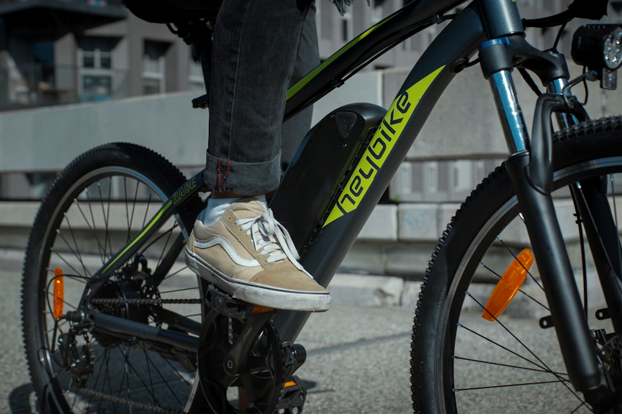10 Things You Need to Know Before Purchasing Your First E-Bike

Purchasing your first e-bike is an exciting venture, but it’s essential to arm yourself with knowledge before making this significant investment. E-bikes offer a unique blend of convenience, sustainability, and fun, making them an increasingly popular choice for commuting, recreation, and fitness. With their electric motors, e-bikes provide assistance as you pedal, allowing you to cover longer distances with less effort, tackle hills with ease, and arrive at your destination feeling fresh. However, with a wide range of models, features, and price points available, choosing the right e-bike can be overwhelming.
To ensure you make an informed decision, it’s important to consider factors such as the type of e-bike that suits your needs, the battery range, the level of assistance it offers, and the overall cost of ownership. This guide will highlight ten essential things you need to know before buying your first e-bike, helping you navigate the selection process and find the perfect electric bike to enhance your riding experience.
1. Understanding Different Types of E-Bikes
E-bikes come in various types, each designed for specific purposes. Pedal-assist e-bikes provide a boost while you pedal, making them ideal for commuting and fitness. Throttle-assist e-bikes allow you to ride without pedaling, perfect for leisurely rides. Electric mountain bikes are built for off-roading, while cargo e-bikes are designed to carry heavy loads. Knowing which type suits your needs is crucial in selecting the right e-bike.
2. Speed and Power Considerations
When choosing an e-bike, consider the speed and power you need. A fast electric bike can offer speeds up to 28 mph (45 km/h), ideal for keeping up with traffic or shortening commute times. However, higher speeds may require licensing and registration in some areas. Assess your typical riding conditions and decide if a high-speed e-bike is necessary or if a standard model will suffice.
3. Battery Life and Range
The battery is the heart of an e-bike, determining the distance you can ride on a single charge. Consider your daily commute distance and any additional trips you plan to make. Look for e-bikes with a battery range that exceeds your typical needs to avoid running out of power mid-journey. Also, check the battery’s lifespan and replacement cost, as this will be an important factor in the long-term maintenance of your e-bike.
4. Weight and Portability
E-bikes are generally weightier than conventional bicycles due to the added weight of the battery and motor. If you need to carry your e-bike up stairs or onto public transportation, consider its weight and portability. Some e-bikes are designed with lightweight materials and folding mechanisms to make them easier to transport and store.
5. Comfort and Ergonomics
Comfort is key when riding an e-bike, especially if you plan to use it for long commutes or leisurely rides. Look for e-bikes with adjustable components like handlebars and seats to ensure a comfortable riding position. Test ride different models to check for a smooth ride and good ergonomics, as this will greatly enhance your overall e-bike experience.
6. Safety Features
Safety should be a top priority when selecting an e-bike. Look for models equipped with reliable brakes, such as hydraulic disc brakes, for effective stopping power. Integrated lights, reflective materials, and a horn or bell are essential for visibility and alerting others on the road. Additionally, consider an e-bike with a sturdy frame and suspension system for stability and comfort on uneven surfaces.
7. Maintenance and Repair
E-bikes require regular maintenance to keep them running smoothly. Familiarize yourself with the basics of e-bike care, including battery charging, tire pressure checks, and chain lubrication. Ensure that you have access to a reputable bike shop or service center that can handle e-bike repairs and maintenance, as specialized knowledge and tools may be needed.
8. Cost and Budget
E-bikes can vary significantly in price, depending on their features and quality. Determine your budget and consider the long-term costs, including maintenance, repairs, and battery replacement. While it may be tempting to go for a cheaper model, investing in a higher-quality e-bike can save you money and hassle in the long run.
9. Warranty and Customer Support
Before making a purchase, check the warranty offered by the manufacturer. A good warranty can provide peace of mind and protection against defects or issues. Additionally, consider the level of customer support available, as responsive and helpful support can be invaluable if you encounter any problems with your e-bike.
10. Test Riding and Reviews
Finally, always test ride an e-bike before buying it. This will give you a feel for its performance, comfort, and suitability for your needs. Additionally, read reviews and seek recommendations from other e-bike users to gather insights and experiences that can inform your decision.
Conclusion
Purchasing your first e-bike is a significant decision that requires careful consideration of various factors. By understanding the different types of e-bikes and considering your specific needs for speed, power, and range, you can narrow down your options to find the perfect match. Safety features, comfort, and ergonomics are also crucial aspects to ensure a secure and enjoyable riding experience. Additionally, it’s important to factor in the long-term costs, including maintenance, repairs, and potential battery replacement, to ensure that your e-bike remains a cost-effective and reliable mode of transportation.
Before making your final decision, always take the time to test ride different models to get a feel for their performance and suitability for your needs. Reading reviews and seeking recommendations from other e-bike users can provide valuable insights and help you make an informed choice. Moreover, consider the warranty and customer support offered by the manufacturer, as these can be invaluable in the event of any issues.




